Are you looking to maintain your vitality and independence as you age? Look no further than senior fitness functional exercises.
In today’s fast-paced world, the importance of staying active and healthy becomes increasingly evident, especially for older adults.
Senior fitness functional exercises offer a tailored approach to physical activity, focusing on enhancing strength, flexibility, balance, and coordination.
These exercises are specifically designed to mimic movements essential for daily living, ensuring that seniors can perform tasks with ease and reduce the risk of injury.
From seated exercises targeting core strength to standing movements improving balance and mobility, senior fitness functional exercises cater to a range of abilities and fitness levels.
Join us as we explore the transformative benefits of incorporating these exercises into your daily routine, promoting overall well-being and longevity. Stay focused.

What Does it Mean By Senior Fitness Functional Exercises?
Senior fitness functional exercises refer to physical activities designed specifically for older adults to enhance their strength, flexibility, balance, and coordination while mimicking movements necessary for daily living.
These exercises focus on improving functional abilities, enabling seniors to maintain independence and perform daily tasks with ease. Examples include squats, lunges, arm raises, and balance exercises like standing on one leg.
The goal of senior fitness functional exercises is to improve overall quality of life by reducing the risk of falls, enhancing mobility, and increasing energy levels.
These exercises also promote bone density, joint health, and cardiovascular fitness, crucial for maintaining health and vitality as individuals age.
Moreover, senior fitness functional exercises can be tailored to accommodate varying fitness levels and health conditions, ensuring safety and effectiveness.
Incorporating these exercises into a regular fitness routine can lead to greater independence, improved mood, and a higher sense of well-being for older adults.
Different Types of Senior Fitness Functional Exercises
Senior fitness functional exercises encompass a range of movements designed to improve strength, flexibility, balance, and coordination among older adults.
These exercises target essential functional abilities, enabling seniors to maintain independence and enhance their quality of life. Here, we’ll delve into some exercises tailored for seniors:
Heel-to-Toe Walk
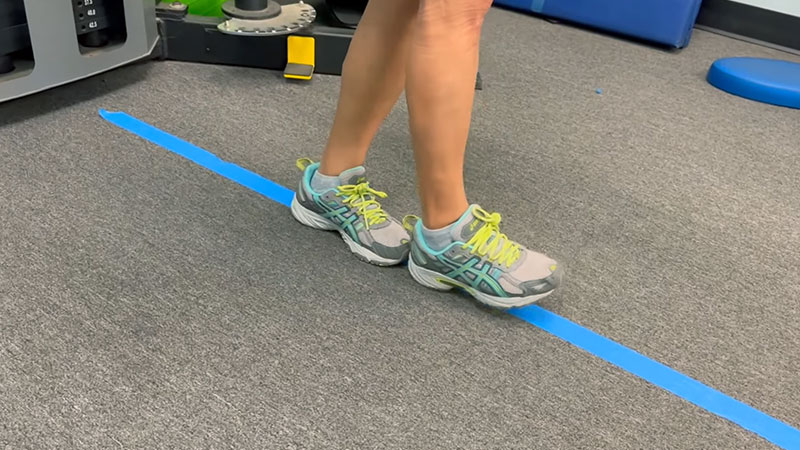
The heel-to-toe walk, also known as the tandem walk, is a balance exercise that challenges coordination and proprioception.
Seniors stand with one foot directly in front of the other, heel to toe, maintaining a straight posture and engaging the core muscles for stability.
They then walk forward in a straight line, placing one foot directly in front of the other with each step.
This exercise improves balance, strengthens the ankles, and enhances spatial awareness, all of which are crucial for preventing falls and maintaining mobility.
Sit-to-Stand
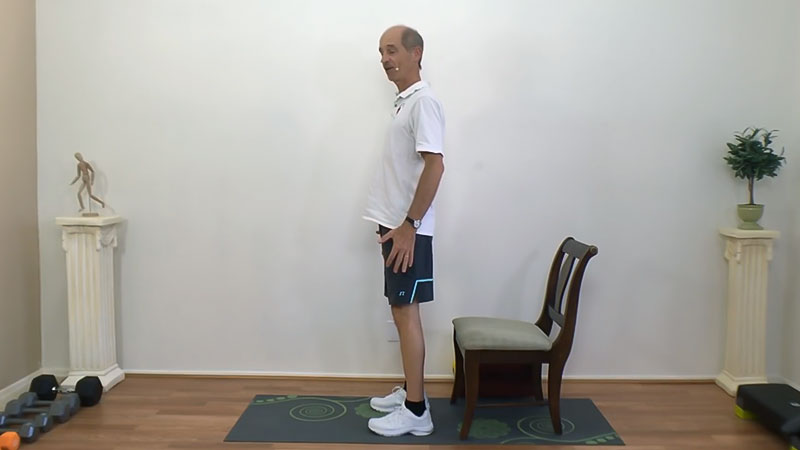
The sit-to-stand exercise focuses on improving lower body strength and mobility, crucial for performing daily activities like getting in and out of chairs or climbing stairs.
To perform this exercise, seniors start by sitting on a chair with feet flat on the floor. Using their leg muscles, they then stand up fully, maintaining proper posture and balance, before slowly sitting back down.
This exercise not only strengthens the quadriceps, hamstrings, and glutes but also enhances core stability and promotes independence in daily living tasks.
As seniors progress, they can increase the difficulty by using a lower chair or adding resistance with weights.
Wall Push-Ups
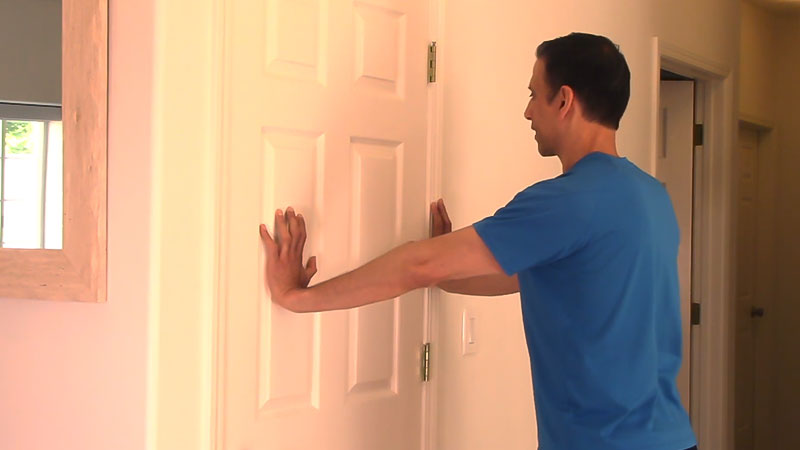
Wall push-ups are a modified version of the traditional push-up, designed to build upper body strength without putting excessive strain on joints.
Seniors stand facing a wall with arms extended at shoulder height and palms flat against the wall. They then bend their elbows, lowering their chest towards the wall, before pushing back to the starting position.
This exercise targets the chest, shoulders, and arms, improving functional strength for activities like pushing doors or lifting objects.
Seated Leg Lifts
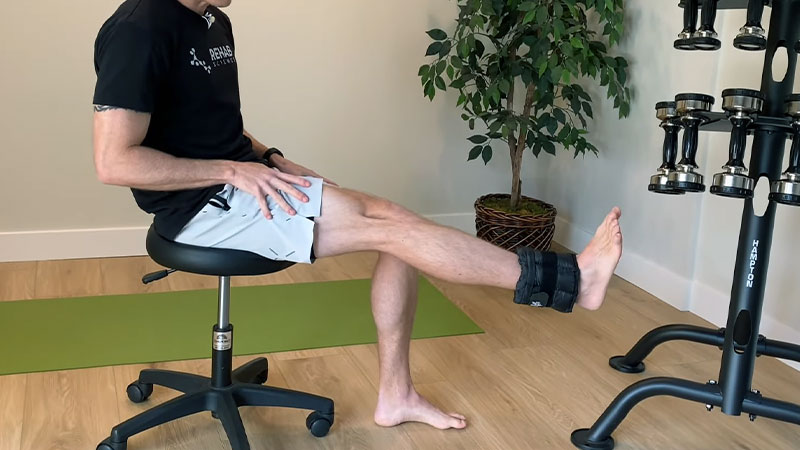
Seated leg lifts target the lower body muscles, particularly the quadriceps and hip flexors, essential for mobility and balance. Seniors sit on a chair with feet flat on the floor and hands resting on the sides.
Keeping one leg straight, they lift it forward until it’s parallel to the ground, then slowly lower it back down. This exercise strengthens the leg muscles and enhances stability, aiding in activities such as walking and stair climbing.
Seated Shoulder Press
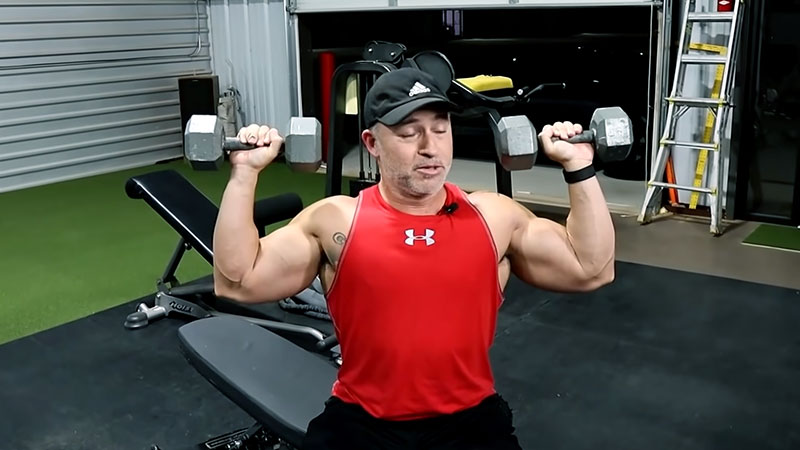
The seated shoulder press is a seated upper body exercise that targets the shoulders, arms, and upper back muscles.
Seniors sit on a chair with their feet flat on the floor and hold a weight or resistance band in each hand at shoulder height, palms facing forward.
They then press the weights overhead until their arms are fully extended, before lowering them back down to shoulder height.
This exercise helps to improve shoulder strength and mobility, aiding in activities like reaching overhead and lifting objects safely.
Step-Ups
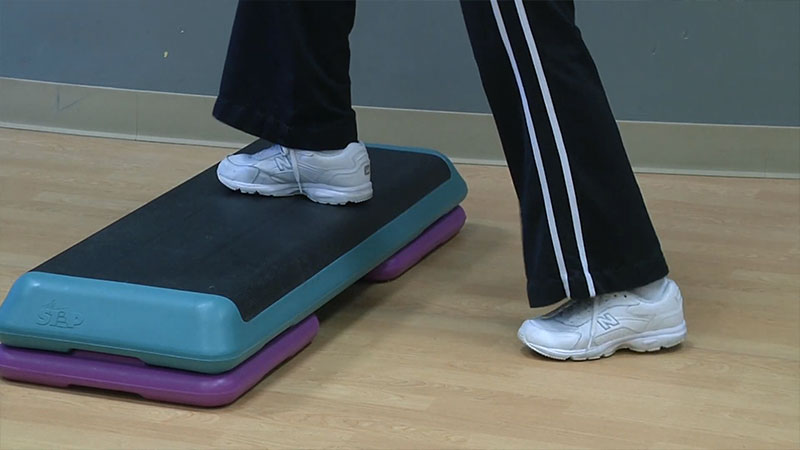
Step-ups are a functional lower body exercise that strengthens the muscles of the legs, particularly the quadriceps, hamstrings, and glutes, while also improving balance and coordination.
To perform step-ups, seniors stand in front of a step or sturdy platform with feet hip-width apart.
They then step up onto the platform with one foot, driving through the heel to lift the body up, and then bring the opposite foot up to meet it.
Finally, they step back down, leading with the same foot. Step-ups mimic movements like climbing stairs and getting in and out of vehicles, making them highly functional for daily activities.
Seated Marching
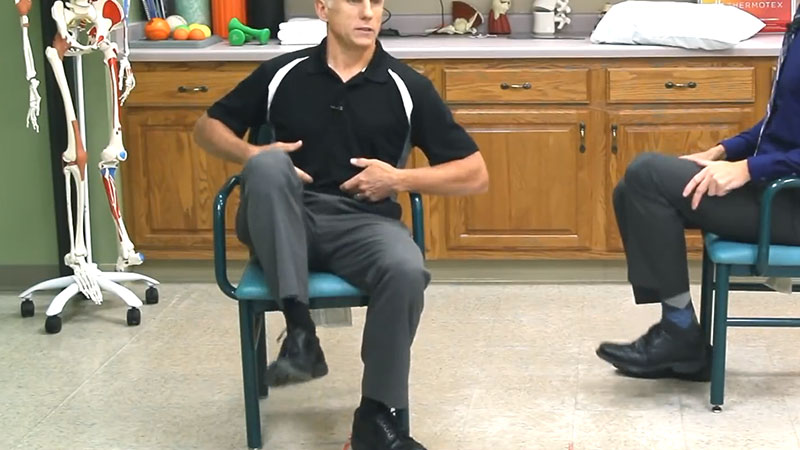
Seated marching is a seated exercise that targets the core muscles, including the abdominals and hip flexors, while also promoting good posture.
Seniors sit tall on a chair with feet flat on the floor. They then lift one knee towards the chest while keeping the back straight and the core engaged, before lowering it back down and repeating with the opposite leg.
Seated marching helps to improve hip mobility, strengthen the core, and maintain flexibility in the lower body, all of which are essential for activities like standing up from a seated position and maintaining balance while walking.
Standing Hip Abduction
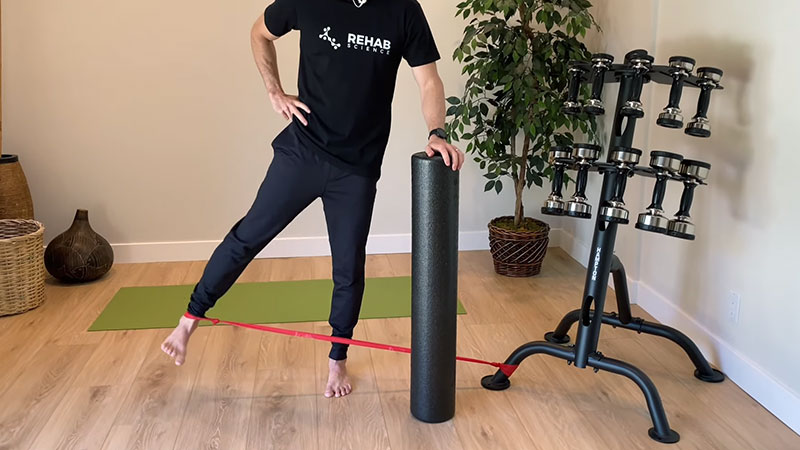
Standing hip abduction is a lower body exercise that targets the muscles of the hips and outer thighs, known as the abductors. Seniors stand tall with feet hip-width apart, holding onto a stable surface for support if needed.
They then lift one leg out to the side, keeping the knee straight and the toes pointing forward, before lowering it back down with control.
This exercise improves hip stability, strengthens the muscles responsible for lateral movement, and helps to prevent falls by enhancing balance and coordination.
Seated Row with Resistance Band
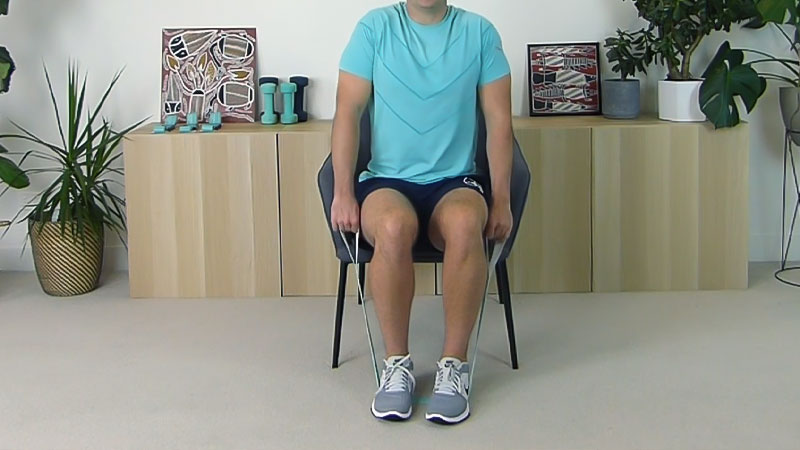
Seated row with a resistance band is an upper body exercise that targets the muscles of the back, shoulders, and arms, while also engaging the core for stability.
Seniors sit on a chair with feet flat on the floor and knees bent. Holding onto the ends of a resistance band, they keep their arms extended in front of them at shoulder height.
They then pull the band towards their chest, squeezing the shoulder blades together, before slowly releasing back to the starting position.
Seated rows help to improve posture, strengthen the muscles of the upper back, and enhance overall upper body strength and endurance.
Seated Torso Twist
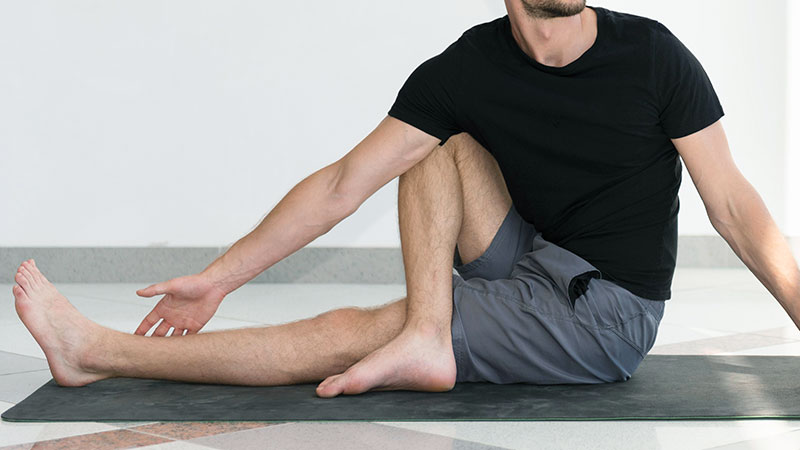
Seated torso twist is a seated exercise that targets the muscles of the core, including the obliques, while also improving spinal mobility and flexibility. Seniors sit tall on a chair with feet flat on the floor and knees bent.
Holding onto a lightweight or medicine ball, they engage their core muscles and rotate their torso to one side, bringing the ball towards the hip.
They then return to the center before twisting to the opposite side. Seated torso twists help to improve rotational strength, enhance spinal mobility, and reduce the risk of lower back pain by strengthening the muscles that support the spine.
Each of these senior fitness functional exercises plays a vital role in improving strength, flexibility, balance, and coordination, ultimately enhancing independence and quality of life for older adults.
Safety Considerations for Senior Fitness Functional Exercises
Ensuring the safety of seniors during fitness functional exercises is paramount to prevent injuries and promote overall well-being. Here are several key considerations to keep in mind:
Consultation with Healthcare Provider
Before starting any exercise program, seniors should consult with their healthcare provider, especially if they have pre-existing medical conditions or are taking medications that may affect their ability to exercise safely.
A healthcare provider can offer personalized guidance and recommendations based on an individual’s health status.
Proper Warm-Up and Cool Down
Seniors should always begin their exercise sessions with a thorough warm-up to prepare their muscles and joints for activity. Gentle cardiovascular exercises such as walking or cycling can help increase blood flow and flexibility.
Similarly, incorporating a cool-down period at the end of the workout can help gradually lower heart rate and prevent muscle stiffness.
Gradual Progression
Seniors should progress gradually when starting a new exercise program or increasing the intensity of their workouts.
Overexertion or pushing too hard can increase the risk of injury. It’s essential to listen to the body’s cues and avoid doing too much too soon.
Proper Form and Technique
Correct form and technique are crucial for maximizing the effectiveness of exercises while minimizing the risk of injury.
Seniors should focus on maintaining proper alignment, engaging the appropriate muscles, and moving through the full range of motion. Working with a qualified fitness instructor can help ensure proper form and technique.
Use of Appropriate Equipment
When performing functional exercises, seniors should use appropriate equipment that is safe and suitable for their fitness level. This may include resistance bands, stability balls, or light dumbbells.
Equipment should be properly maintained and inspected for any signs of wear or damage before each use.
Avoiding Overexertion
Seniors should exercise at a level that is challenging yet comfortable for their fitness level.
Pushing too hard or ignoring signs of fatigue can increase the risk of injury and may lead to overexertion. It’s important to pace oneself and take breaks as needed during workouts.
Stay Hydrated and Well-Nourished
Proper hydration and nutrition are essential for supporting exercise performance and recovery. Seniors should drink plenty of water before, during, and after exercise to prevent dehydration.
Additionally, consuming a balanced diet rich in nutrients can help provide the energy needed for physical activity and promote muscle recovery.
Listening to the Body
Above all, seniors should listen to their bodies and pay attention to any warning signs or discomfort during exercise. It’s important to differentiate between normal muscle fatigue and pain that may indicate an injury.
If experiencing pain or discomfort, seniors should stop the exercise and seek guidance from a healthcare professional.
By incorporating these safety considerations into their fitness routine, seniors can enjoy the numerous benefits of functional exercises while minimizing the risk of injury and promoting long-term health and well-being.
Wrapping Up
Senior fitness functional exercises offer a holistic approach to maintaining health and independence as we age.
By focusing on strength, flexibility, balance, and coordination, these exercises address the specific needs of older adults, enhancing their quality of life and reducing the risk of injury.
Through a combination of seated, standing, and low-impact movements, seniors can improve their functional abilities, perform daily tasks with ease, and experience greater vitality and well-being.
However, safety considerations such as consulting with healthcare providers, using proper form, and avoiding overexertion are crucial to ensure a safe and effective exercise routine.
By incorporating these exercises into their regular fitness regimen and prioritizing safety, seniors can enjoy the physical and emotional benefits of staying active and independent for years to come. Best of luck.
I am a fitness instructor and I have been in the industry for 9 years. I have a passion for health and fitness.
I am a fitness instructor with over 9 years of experience in the industry. My passion is health and fitness and I would love to share my knowledge with you!